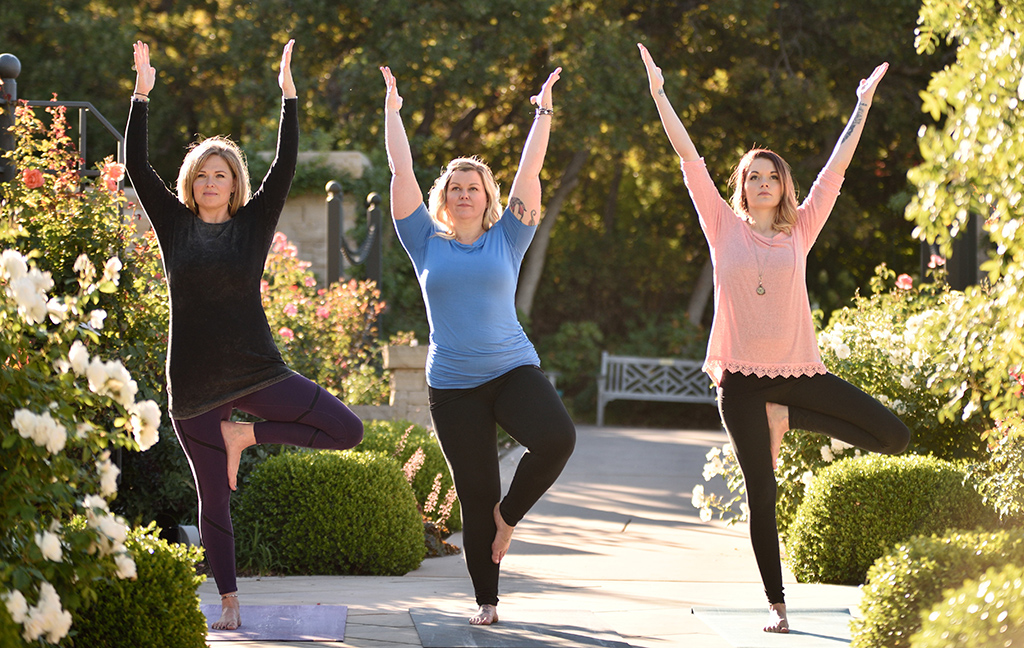 My first exposure to yoga asanas was in a commercial when I was probably in junior high. In the commercial, a slim young woman in a leotard spoke calmly about whatever product she was promoting while moving through a series of crazy feats of flexibility.
My first exposure to yoga asanas was in a commercial when I was probably in junior high. In the commercial, a slim young woman in a leotard spoke calmly about whatever product she was promoting while moving through a series of crazy feats of flexibility.
Because I was already hypermobile, it piqued my curiosity, and eventually I found the practice in the early 1980s. Like many people, I misunderstood my natural hypermobility as a plus for practicing asana.
I gravitated toward the poses that my body could do easily, and eschewed the ones that were challenging. In my particular body, extreme “advanced” flexibility poses were easy. Strengthening was a struggle.
Over the years, I’ve come to appreciate the importance of building strength. In fact, healthy flexibility comes from creating a strong foundation. Flexibility on its own is not balance. If you read the yoga sutras, the first of the three sutras that address asana says:
The physical posture should be steady and comfortable. ~ translated by Alistair Shearer
So despite the fact that most asana photographs depict feats of extreme flexibility, asana is really about creating balance between strength and flexibility.
3 Stabilizing Yoga Poses
There are many, many asanas that promote stability. All standing poses, for example, are inherently strengthening. There are also core strengthening poses you can practice on the floor, such as Navasana (Boat Pose) and Parsva Balasana (Bird Dog Pose). I’m going to focus here on just three favorites, but know that there are lots more stabilizing yoga poses among the hundreds of yoga asanas. It’s important to include them in every practice, so that your flexibility can come from a strong foundation.
- Tadasana (Mountain Pose): Tadasana is the foundation of all the other asanas. Learning to stand in Tadasana with your joints aligned teaches you how to align the rest of your poses. Your body is most stable and rooted when your joints are in neutral positions. Tadasana doesn’t have to be confined to your practice on the mat. You can practice stabilizing your Tadasana whenever you’re standing—in lines at the grocery store or bank, at social gatherings, etc. Read more about finding neutral alignment in Tadasana in this post.
- Vrksasana (Tree Pose): The benefits of honing your balance are many. First, the skill of balancing can keep you from falling. This is important at any age, but is especially important for those moving into their 50s and beyond. Practicing balance also seems to increase concentration. Standing on one leg strengthens the muscles that stabilize the hips. I chose Tree Pose here as an example, but any one-legged balance will help create stability. Here’s a post that explains the finer points of Vrksasana.
- Utkatasana (Fierce Pose): Commonly known as “Chair Pose,” Utkatasana has become my go-to among stabilizing yoga poses for the hips. Fierce Pose fires up the quadriceps, muscles of the outer thighs and the hamstrings. For more info on how to practice Utkatasana, and especially where to focus to create maximum stability, read this post.
